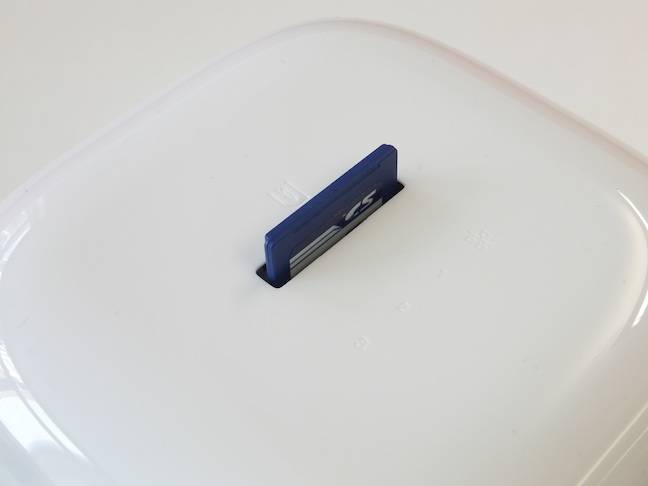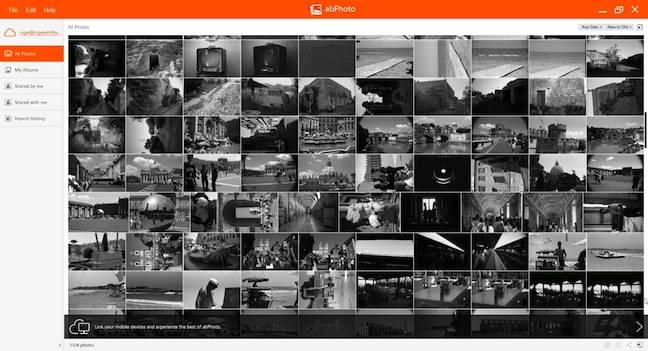This article is more than 1 year old
Acer Revo One RL85: A pint-sized PC for the snug
Compact living room Core i5 put through its paces
A PC for the home?
Given that the primary connector for video on the back of the Revo One is HDMI, and the remote control that comes with it, it's a fair bet that many of these are going to end up connected to TV sets. It's a little annoying, then, that it's pretty fiddly to adjust the display in Windows.
In the end it was simpler to delve into the TV menus and turn overscan off than to hunt around in Windows settings to achieve the same effect.

The top of the Revo has an SD Card slot, plus white indicator LEDs
The supplied Windows 8.1 is, as Reg readers will appreciate, a bit of a mixed bag. The tiles work well from sofa distance, and so do apps like Netflix; thanks to the HDMI, you stand a good chance of getting surround sound, if you have compatible equipment. But when it comes to logging in, you'll probably find yourself squatting in front of the screen checking you're typing the right thing. That's Windows' fault, though, not Acer's.
Also Windows' fault is the loopy way in which, even on a system shipped with drives set up to provide 2TB of storage in RAID 1 mode, the User folders have to be on the SSD boot drive.
Sure, you can fiddle around with this, to a limited extent, but I can't help feeling that this is the sort of Windows silliness that will leave many home users confused that their drive is full, when there's still terabytes of storage on D.
In addition to bog standard Windows 8.1, there's also Acer's own suite of apps, which consist of tools to organise your media, your photos and your documents. The main thrust of these is creating a 'personal cloud.'
That means that, once you link the system to Acer's cloud services – a Google or Facebook ID will do the trick – you can access things on your PC via mobile apps. It's also possible to set your phone to backup to the computer at home.
Whether or not this is really useful is arguable; there are plenty of services around that will do similar things, and perhaps tech savvy Reg readers will prefer to use those. On the other hand, these are simple to set up, and pre-installed.
They even show a handy QR code on screen to help you grab the app on your mobile. The mobile apps are nothing special, but they do the trick. Also thrown in is Office 2013, and McAfee Internet Security.
Benchmark results and hardware
The rest of the hardware is pretty standard stuff; the hard drives in our system's RAID setup were Samsung Spinpoint/Seagate Momentus M9T models, while the system SSD was from LiteOn. The RAID controller is from Intel, as is the rest of the chippery, including the Intel HD5500 graphics (plain old Intel HD Graphics on the entry level Celeron model).
The Core i5 test system – with a system SSD, remember – managed a pretty creditable 2726 in PCMark 8's Home tests, and 3748 in the less demanding Work tests. The frame rate for casual gaming was 19.2fps, and the GeekBench multi-core score 4083 and 1715 for single core performance. Not spectacular, but likely good enough for the target market.
I also ran a quick test on the Celeron version, with 4GB memory and a 2TB hard drive (partitioned into 2 x 1TB). Geekbench figures were 1319 single core, and 2317 multi-core, while PCMark home came in at 1816, and 11.8fps.
One point worth noting is that – as well as that annoying loss of a USB port to the Bluetooth dongle – the ports are very close together. Plug something fat, like the Meta 35 adaptor into one, and you probably won't be able to fit anything into the socket next to it.



